Sights of Burgos:
Casa del Cordón Palace (Casa Del Cordón)

Located this palace near the Santa Maria bridge. The palace was built in the 15th century. Interestingly, the name of the Palace is translated as the "House of Rope" (because the portal's ornament is similar to the rope, the symbol of the belt of the Franciscan monk). Before the palace there is a memorial plaque, which says that in 1497, Columbus, after the second expedition to America, met as the King and Queen of Castile, Isabella and Ferdinand. Castile is the area of Spain, where Burgos was once the capital.
Address: Calle de Santander
Monastery Real De Las Welgas (Monasterio Santa María Real De Las Huelgas)

The ciscerian monastery (Cistercians or Bernardians - the Catholic monastic order, which separated in the 11th century from the Benedictine Order) was built in 1187 by order of the King of Alphonse XVIII. At the monastery there is a museum of fabrics, where you can look at the vintage covers of royal tombstones and different samples of medieval weaving. Capilla de Santia (Capilla de Santia) is the Statue of St. Jacob with a sword (a statue of wood), which were devoted to the Knights of the Order of Santiago.
Address: Plaza Compás, 8
Archaeological Museum of Burgosa (Museo de Burgos / Museo Arqueológico Provincial)
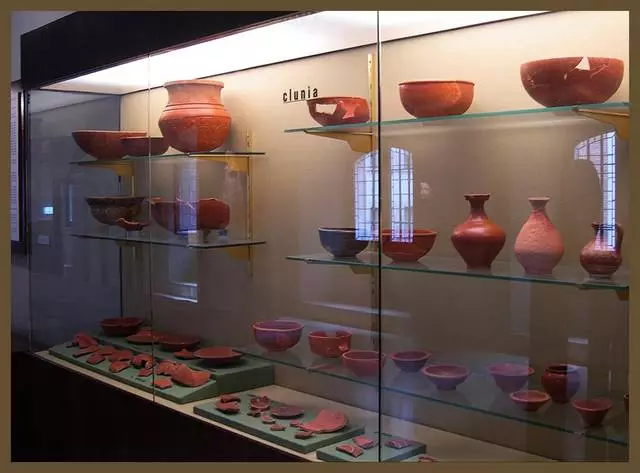
The museum on three floors offers to see a huge number of archaeological finds, from the time of the Stone Age to ancient Rome. Informative! The museum works from 10:00 to 14:00 and from 17:00 to 20:00 every day, except Monday.
Address: Cale Calera, 25-27
Miraflores Monastery (Cartuja de Miraflores)
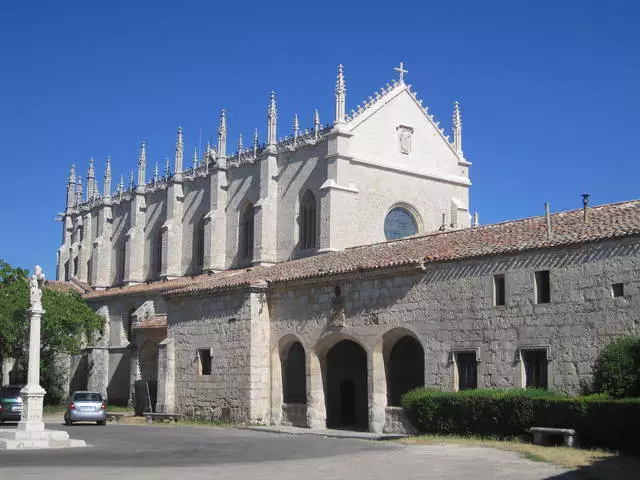
Located this monastery is slightly outside Burgos. The building was originally planned as a country villa of King Castile Juan II. It was built by 1484. The building is like some kind of gloomy fortress. Inside, an impressive retabilo is located (the Spanish version of the altar image to the ceiling) made of wood covered with gold. The spectacle is extraordinary! Be sure to look at the monastery's covered gallery. At the monastery, parents (Juan II and Isabella Portuguese) are buried by one of the united people of Spain, Queen Castile and Leon, Isabella Castilskaya. The monastery is open from 10.15 to 15.00 and from 16.00 to 18.00 on weekdays and Saturdays, as well as 12.30-13.00 and 15.00-16.00 on Sundays.
Address: Carretera Fuentesblancas (3.5 km east from the center of Burgos)
Arch Santa Maria
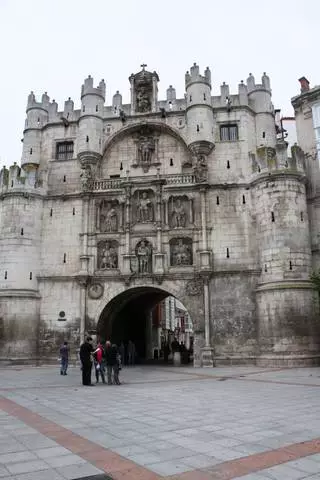
The arch is one of the symbols of Burgos and part of the city cathedral. These gates are like lead to the city. By the way, these are the most ancient of the twelve urban gates. This arch tower connects the bridge over the Aronson River and the City Square of St. Ferdinando. This arch was built by the 15th century, and the eyelid after the gate was completely reconstructed. The gates are made of stone, in the center on the facade you can see 6 niches with beautiful sculptures, which depict the leaders of Burgos and Spain. Over them you can see two more sculptures - the guardian angel Burgos and Virgin Mary, the patron of the city. In the aisle of the arch, you can see fragments of painting 17th century.
Espolon Boulevard (Paseo Del Espolon)
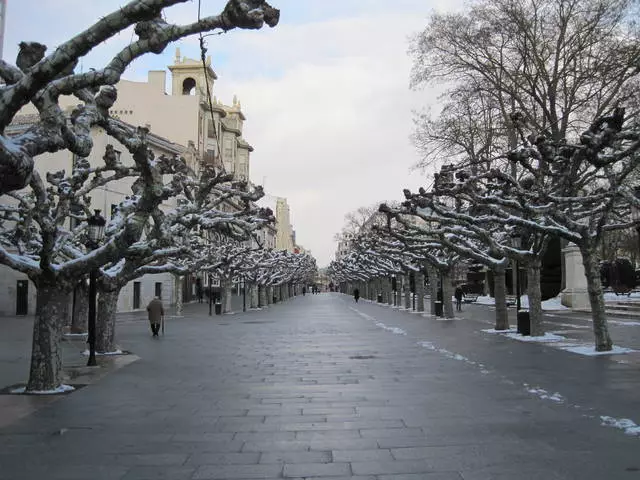
Great place for walking in the heart of Burgosa, on the right bank of the Aronson River. Boulevard leads from the Arco-De Santa Maria Theater Square and ends at the city theater. Walk through this boulevard is greatly located around the buildings of various eras - just and have time to take pictures. The project of the street belongs to the architect, who was engaged in the development of the building of the Burgos City Hall. Boulevard is not very long, about 300 meters. In the 19th century, trees were planted on the boulevard - Linden and Acacia. After the war with Napoleon, the Boulevard became wider, began to "figure out" luxurious mansions. Queen Isabella II declared a boulevard a pedestrian zone, and cafes and shops began to appear on the alley. At the very end of the 19th century, a musical gazebo was built on the boulevard - it can be seen today. In 1931, Alley was reconstructed, the old trees were shot, put new trees, installed fountains and gazebos, posted numerous flowerbeds. The trees on the boulevard are figurily, and because everything looks very elegant.
Burgos Fortress (Castillo de Burgos)

This fortress is one of the most ancient facilities in the city. She was built in 884 as a defensive object of a new city. In the period of 11-13 centuries, the fortress was completed and expanded. The owners of the fortress often changed, and everyone tried to remake her or remind something, as a result, for the 16th century, the fortress came in full decline. In addition, in the middle of the 18th century there was a strong fire there, and the fortress was almost erased from the face of the earth. During the war for independence, the fortress managed to reconstruct a little bit. But during the expulsion of the Army Napoleon, the fortress was undermined, about 200 people died. Well, the fortress after that could not be restored. Today you can see the restored fragments of the fortress and items found during the excavations. And anyway, a triangular fortress with a unique underground move and gallery 300 meters is impressive in length. Today the fortress is actively reconstructed.
Address: Cerro de San Miguel
Monastery of St. Dorota (Convento de Santa Dorotea)

This monastery is located in the southern part of the city, two steps from the Cathedral. This is a valid monastery of nuns-Augustine. The construction of the monastery is rooted in 1387, when Donna Dorothea Rodriguez Valderram organized a monastic community near the Burgos Castle. Then the community changed the location and moved to the other side of the river. The temple is built in the style of late gothic in the form of the Latin Cross. The main portal is decorated with a carved ornament, an arch with a carved decor, and from the top of the coat of arms - the Catholic kings and the patron of the monastery. It is also impressive reliefs on religious motifs. Part of the complex is open for visits.
Monument El Cid Monument
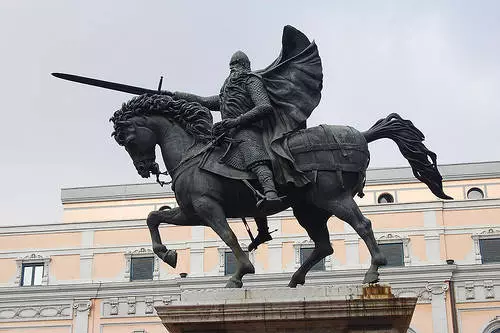
This bronze monument on one of the Square of Burgos is devoted to the National Spanish Hero, Knight El Sida Kampauador. He was from the main heroes of wars in the period of reconquists, legends and poems are devoted to him. He served at the courtyard of the Castilian kings and was distinguished in the warriors with Moorish conquerors. In 1086, El Sid entered the struggle of Arab Emirov for Valencia and soon won and made Valencia with his residence. His even called Campador - winner. The area where the monument is worth, renamed the "Side Square".
